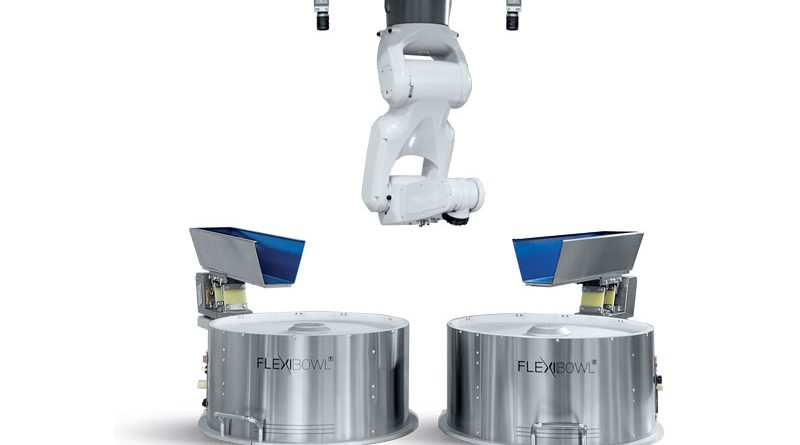Flexible Feeding
In search of the highest operational flexibility, quite an essential feature in the age of Industry 4.0, FlexiBowl® feeding system created by the Tuscan company ARS can be easily integrated with any type
of robot and vision system to feed even the most challenging components, with complex geometry, in clean but also harsh environments. From automotive to electronics, up to cosmetics, healthcare
or general industry, manifold applications are possible.
by Fabrizio Dalle Nogare
In the wordplay evidently recalled by the name of the solution – the assonance with the English adjective flexible – there is the primary objective that the developers of the FlexiBowl system have set themselves: overcoming the limits of traditional feeding systems, often not so suitable for the needs of the current manufacturing industry. In short, not flexible enough.
“Compared to similar systems, FlexiBowl has a rather simple mechanical structure, with reduced maintenance requirements: a direct drive motor allows the movement of the surface on which the components are placed; an intelligent drive manages the control of the actuator parameters, thus allowing components to be placed on the surface so that they can be picked up by the robot; besides, an integrated internal backlight, available in 3 colours, allows the camera to detect the component to be picked”. Andrea Mazzini describes the characteristics of the FlexiBowl system. He is in charge of Business Development within ARS Automation, a Tuscan company that since 1983 has been involved in the design and construction of systems, including robotic ones, for flexible automation.
The system is able to feed a wide range of objects
FlexiBowl is, in fact, a flexible feeding system for small components, easy to be integrated with an artificial vision system and a robot, which can be a SCARA, a six-axis or even a Delta one, supplied by any manufacturer on the market. The system is able to feed a wide range of objects regardless of their geometry, surface, material, weight or size. The rotating disk is available in various colours, textures, resistances and degrees of adhesion and can easily be replaced in order to be cleaned. This is especially useful when the products to be fed contain dust or oil. A system to convey liquids to the outside is also provided. On the FlexiBowl disk, components with size ranging from 1 to 250 mm and from 1 to 250 g each, for a total weight of 5 kg, can be loaded. “The ability to load and feed even large-sized components is an important requirement, for example, in the automotive industry, which currently accounts for about 40% of the systems sold, both in Italy and abroad, where we operate through some distributors. An approximately 30% of sales is equally distributed between the cosmetic and healthcare industries, another 15% is devoted to consumer electronics, 10% in the white goods and a smaller share is addressed to the general industry”, summarizes Andrea Mazzini. “The possibility of feeding particularly challenging pieces – very delicate parts indeed, with special shapes, tending to tangle or with dirty and sticky surfaces – is one of the features our customers appreciate the most”.
The proprietary vision system
About the artificial vision system, a key element of the FlexiBowl, ARS Automation has focused its efforts particularly on the design. “We have developed a proprietary vision system, named FlexiVision, based on the Halcon library. In addition to controlling the hopper flow and movements, FlexiBowl ensures high compatibility with robots available on the market, sending the coordinates to manage the picking process. In fact, it is important to underline that the system’s performance is the result of the perfect integration between the feeding system, the robot and the vision system”, says Mr Mazzini.
FlexiBowl is available in 4 sizes, with an internal diameter of approximately 350, 500, 650 and 800 mm. The various parts that make up the system are generally available in stock and managed with an assembly-to-order logic, which requires that the assembly process be initiated when the order is received with maximum delivery time estimated in four weeks.
Among the most efficient applications of the system conceived by ARS Automation is the use, with a high-speed robot like a SCARA or a Delta one, of the double feeder: a first FlexiBowl acts as a “master”, while a second feeder acts as a “slave”, allowing the robot to pick up the components without any downtime. “By combining a Delta robot with two FlexiBowl feeders, we have been able to achieve a speed rate higher to 90 pieces per minute”, concludes Andrea Mazzini.

